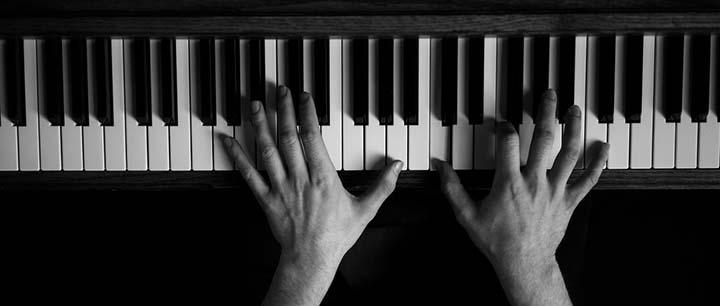 So you’ve started piano lessons and you’re in it for the long haul… but playing the same exercises over and over again is starting to get boring. We understand. No one goes to the gym and does the same routine day in and day out. Why should you have to trudge your way through the same repetitive piano exercises over and over? Teaching yourself piano requires a bit of creativity in this respect.
So you’ve started piano lessons and you’re in it for the long haul… but playing the same exercises over and over again is starting to get boring. We understand. No one goes to the gym and does the same routine day in and day out. Why should you have to trudge your way through the same repetitive piano exercises over and over? Teaching yourself piano requires a bit of creativity in this respect.
So crack your knuckles, climb down off the top of the piano before you scratch the surface, and give these exercises a try. Oh and if the ones in this video aren’t enough, there are even more listed below!
1. The 25-Cent Lesson
Got a quarter? Let’s see you balance it on the back of your hand. Great. Now, keep it there and run through a few notes. Try a major scale or two. See if you can keep that quarter from sliding off. This is the equivalent of walking while holding five-pound weights. Sure, it doesn’t seem like much at first when teaching yourself piano. After you’ve played like this for awhile, though, you’ll begin to feel it. You’ll be surprised at the amount of flexibility and control this small exercise teaches.
As you practice this exercise, remember to stay relaxed! Instead of tensing up, your hand should feel balanced and relaxed. Relaxation is the key to good piano performance, and it’s the key to good hand and muscle health as well. Do a stretch now and then, just to keep things limber.
2. Everybody Mambo
Tired of that same old melody? Is it Hanon number one or something equally as repetitive? After you’ve practiced the exercises as written, try changing up the rhythm of the phrase just for fun. For example, add a well-timed pause between notes, then follow with a syncopated accent to give it a Latin feel. Listen to some Latin-themed songs to hear some good examples of the types of rhythmic phrases most frequently used, then head on over to the keyboard and copy them. Just remember – this shouldn’t replace your exercises, but they’re a fun way to experiment and have a little fun!
3. Ready, Set, Run That Scale
Let’s face it, scales can get boring after a while. Next time you sit down to do battle with those eight-note beasts, bust out your metronome app. Start with something slow – say, 60 beats per minute. Gradually increase the tempo, seeing if you can keep the scale perfectly in time. You’ll be mastering those scales and honing your sense of tempo before you even realize it. Plus, when teaching yourself piano, mastering scales is the best way to maintain control over the instrument.
4. Play the Table
That’s right, this is an exercise away from the piano. Sit at a table that is about the same height as your piano. Make sure you have a straight-backed chair – no hunching allowed. Place your fingers in piano-playing position on the tabletop. Now lift one finger at a time, keeping all other fingers still, and making sure your knuckles remain curved. Alternate your fingers, tapping lightly on the table. This is a simple exercise that can be done almost anywhere – almost like isometrics – and helps to build a steady, strong touch.
5. Flip It, Flip It Good
If you want a challenging piano exercise that will make you feel like you’ve accomplished something, try this: get the sheet music for your favorite exercise, then flip it upside down. In treble clef, an E note is now an F, a G is now a D, and so on. Try following the exercise this way. Not only will this keep things interesting when teaching yourself piano, but you’ll also find that it’s great for sight reading.
Teaching yourself piano can be tough, but no one said it has to be boring! Experiment and see if you can come up with some interesting variations on these ideas. And when you’re ready to take your studies to the next level, considering signing up for piano lessons with a private teacher – the one-on-one guidance and support you’ll receive is invaluable as you progress and improve your skills!
Photo by Robert Jinks
Suzy S.
